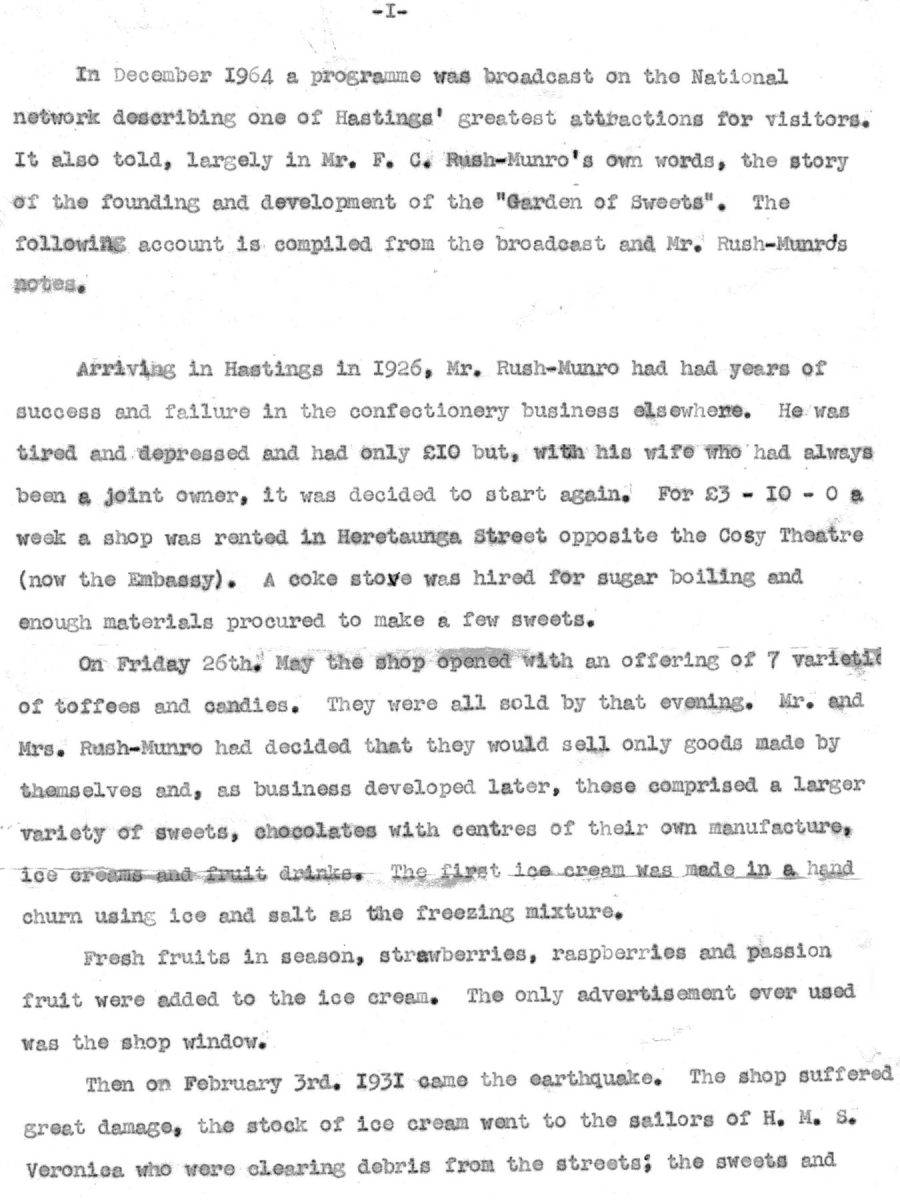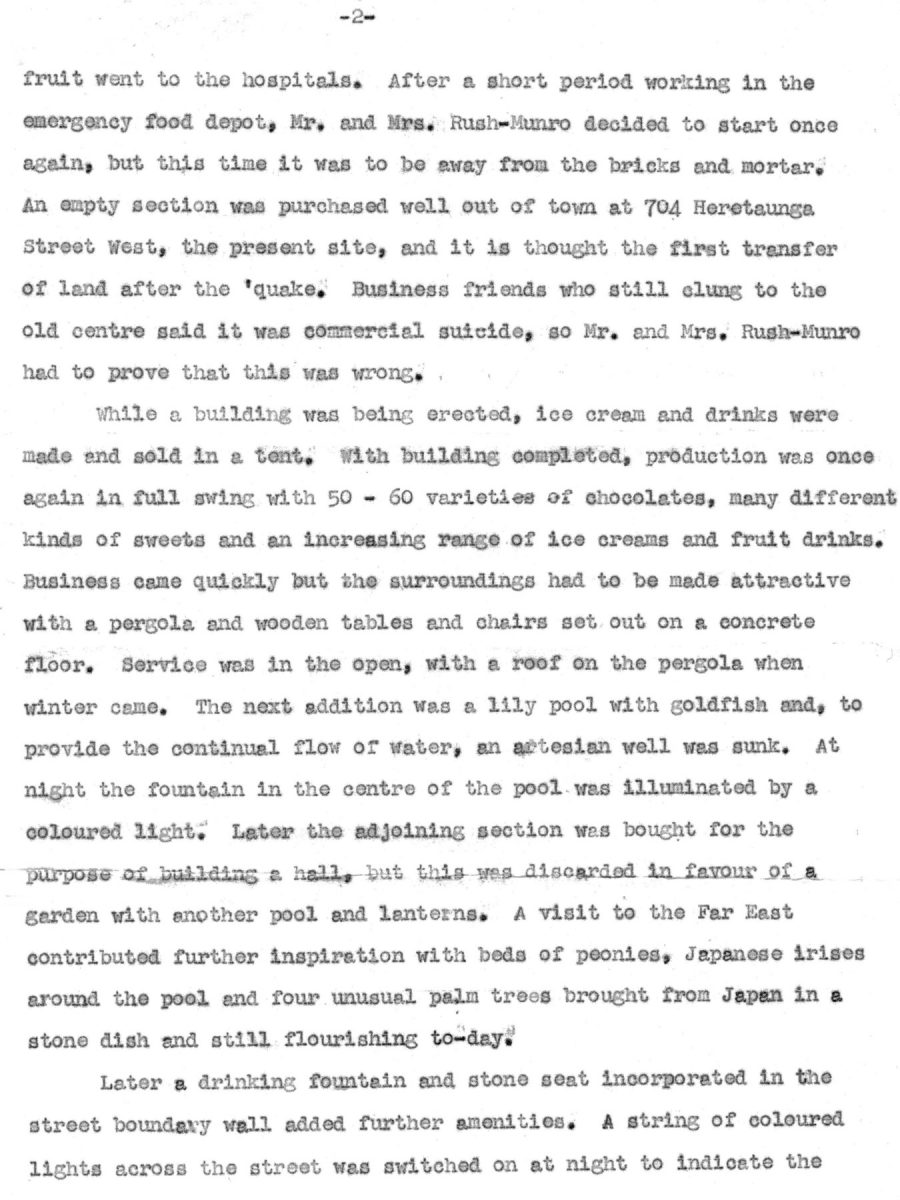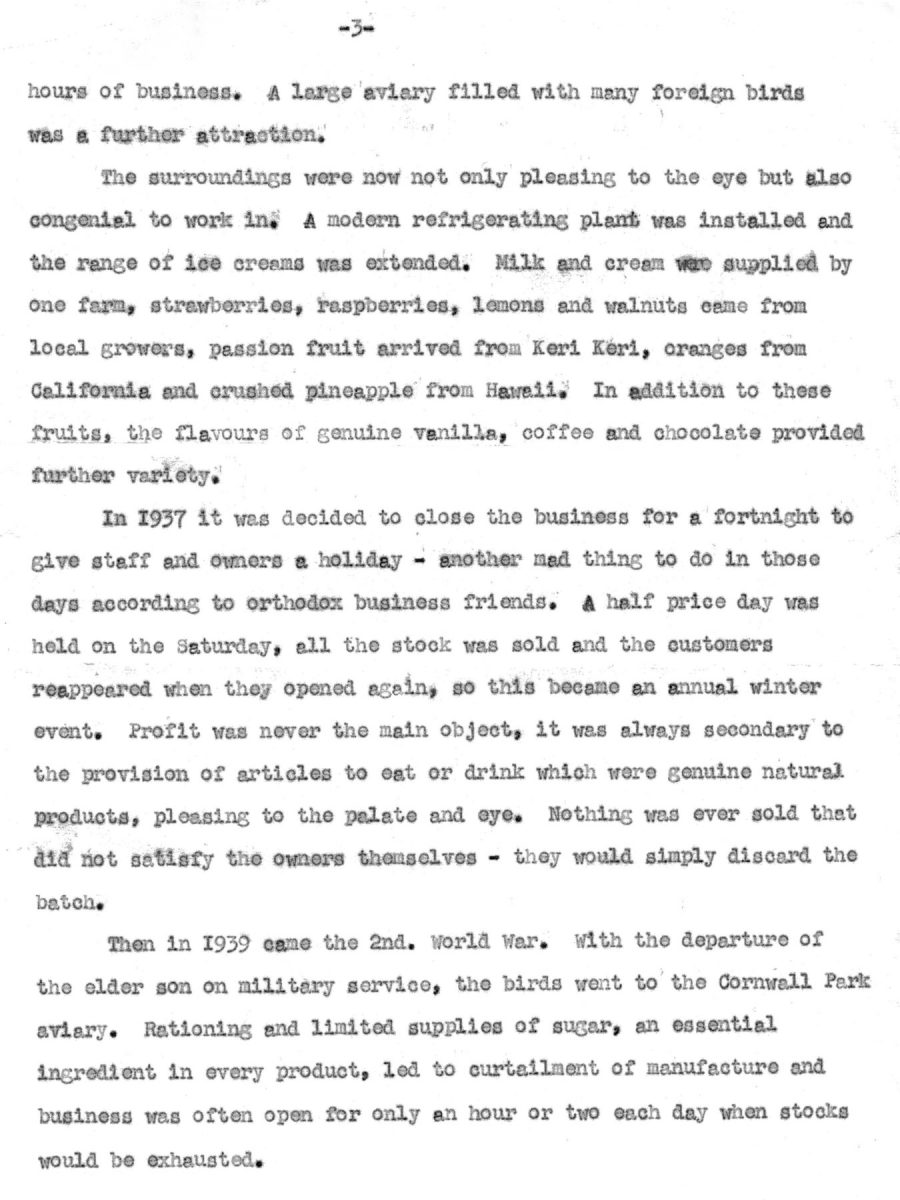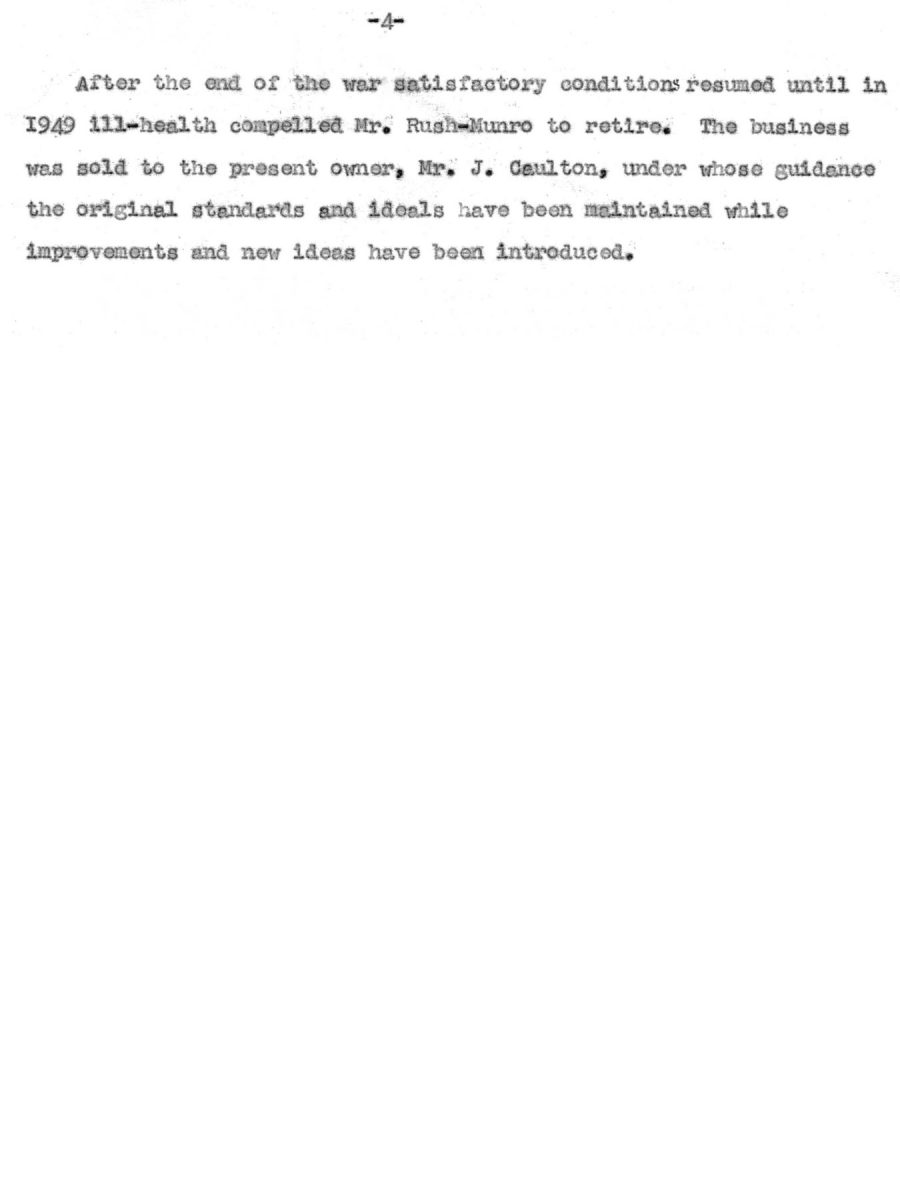In December 1964 a programme was broadcast on the National network describing one of Hastings’ greatest attractions for visitors. It also told, largely in Mr. F. C. Rush-Munro’s own words, the story of the founding and development of the “Garden of Sweets”. The following account is compiled from the broadcast and Mr. Rush-Munro’s notes.
Arriving in Hastings in 1926, Mr. Rush-Munro had had years of success and failure in the confectionery business elsewhere. He was tired and depressed and had only £10 but, with his wife who had always been a joint owner, it was decided to start again. For £3-10-0 a week a shop was rented in Heretaunga Street opposite the Cosy theatre (now the Embassy). A coke stove was hired for sugar boiling and enough materials procured to make a few sweets.
On Friday 26th. May the shop opened with an offering of 7 varieties of toffee and candies. They were all sold by the evening. Mr. and Mrs. Rush-Munro had decided that they would sell only goods made by themselves and, as business developed later, these comprised a larger variety of sweets, chocolates with centres of their own manufacture, ice creams and fruit drinks. The first ice cream was made in a hand churn using ice and salt as the freezing mixture.
Fresh fruits in season, strawberries, raspberries and passion fruit were added to the ice cream. The only advertisement ever used was the shop window.
Then on February 3rd. 1931 came the earthquake. The shop suffered great damage, the stock of ice cream went to the sailors of H. M. S. Veronica who were clearing debris from the streets; the sweets and















Do you know something about this record?
Please note we cannot verify the accuracy of any information posted by the community.